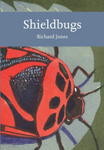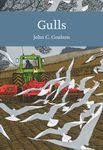![Close Encounters of the Fungal Kind Close Encounters of the Fungal Kind]()
Click to have a closer look
About this book
Customer reviews
Biography
Related titles
About this book
There are three great kingdoms of life – Animals, Plants and Fungi – but the fungi always come in third place. This may be because fungi seem alien to many people: their strange forms, their rapid appearance and disappearance, their hidden means of feeding and propagation. In Close Encounters of the Fungal Kind, acclaimed scientist and author Richard Fortey acknowledges this otherworldliness, marvels at their unique charm and boots-up as a guide through this great, mysterious Kingdom of life.
To Fortey, the strangeness of fungi is what makes them so exciting. Many people find them alien and threatening: the way so many toadstools appear so quickly and disappear with equal dispatch; their strange forms and colours; their reputation as poisoners. But for Fortey, the extraordinary nature of fungi makes him wonder, think and marvel. In Close Encounters of a Fungal Kind, Fortey leads us on a glorious literary journey, narrated through field trips to real places in search of the strangest, most extraordinary, or even most delicious fungi.
Writing with characteristic warmth, wit and wisdom, Fortey focuses on a selection of the larger fungi, the kind that might be spotted on a country walk, and a handful of microfungi that have particularly caught his attention. His enthusiasm and passion as a life-long 'mushroom twitcher' is infectious as he shares his own 'close encounters' and brings us along on his treks through this magnificent Kingdom.
The unique charm of the mushrooms themselves is centre stage in this gripping narrative that explains what fungi do in the natural world and rejoices in their profusion and diversity.
Customer Reviews
Biography
Richard Fortey retired from his position as senior palaeontologist at the Natural History Museum in 2006. He is the author of several books, including Fossils: The Key to the Past, The Hidden Landscape which won The Natural World Book of the Year in 1993, Life: An Unauthorised Biography, Trilobite! and The Earth: An Intimate History. He was elected to be President of the Geological Society of London for its bicentennial year of 2007, and was a Fellow of the Royal Society.
New
By: Richard A Fortey(Author)
356 pages, 16 plates with colour photos; b/w illustrations
"When I was myself keen on fungi, this is the book I longed for: engaging, enthusiastic, and very well informed [...] Fortey’s style is warm, engaging and friendly. He does not over-simplify, but does not use jargon either, and any naturalist would enjoy this narrative of the dark kingdom and its pleasures. [...] As someone has already noted, reading Fortey is to learn a lot without really trying. He is the Bill Bryson of British natural history"
– Peter Marren, British Wildlife 36(6), May 2025
"A very enjoyable book that brilliantly blends science, insight and passion"
– Tristan Gooley



































